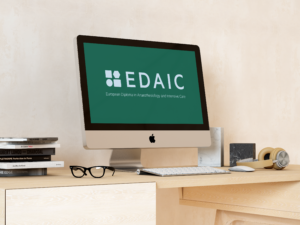Newsletter 2022
Newsletter May 2022: ESAIC Trainee Exchange Programme
Gabriela Sousa
gscsousa@gmail.com
Centro Hospitalar e Universitário de São João, Porto, Portugal
My name is Gabriela Sousa and I work in a tertiary hospital in Oporto, Portugal, as an anaesthesiologist, since 2017.
A couple of years ago I felt the need to challenge myself, 
After many hesitations, cancellations, a pregnancy and postponements because of the COVID-19 pandemic, I finally travelled in 2021 to the Academical Medical Center (AMC) in Amsterdam, one of the largest and leading universities hospitals in the Netherlands. I arrived in Amsterdam in the middle of September, when most of the COVID-19 restrictions had been removed and life seemed to be getting back to normal! I must confess I was quite surprised about it but, at the same time, I was very enthusiastic about the months to come!
I was very welcomed at the AMC by the host, Professor Benedikt Preckel, who was tireless in organising my accommodation and all the bureaucracy and details of my fellowship!
At the AMC, I found a very organised and dynamic anaesthesia department! A renewed Operating Theatre Complex, with 20 spacious, modern, and well-equipped operating rooms functioned as a well-assembled, paper-free and fully computerised circuit. I was very impressed with the dynamics, punctuality, assertiveness and professionalism of the team!
My working day started early, at 7h30am, in the “pre-holding area”! In this place, the anaesthesiologists performed venous catheterisations, epidurals and single and continuous peripheral nerve blocks under ultrasound guidance. Cardioversion and other ultrasound-guided techniques also took place here. Most of my patients were from Trauma, Orthopedics and Plastic Surgery.
During my fellowship, I found some didactic, inspiring, and supportive Colleagues, truly enthusiastic and passionate about regional anaesthesia! Namely, I am very thankful to my great mentor – Dr Yvonne Hein, for the encouragement, the sharing of detailed knowledge and exemplary perfectionism! It was really important for me to develop a basis, method and good practices in echography.
I have had the opportunity to watch and perform several single-shot and continuous peripheral nerve blocks. I also participated in the department meetings, clinical case discussions and workshops.
But I have learned far beyond the scope of regional anaesthesia! I came to know completely different ways to practice anaesthesia, from which I highlight two aspects. There was extreme concern about the increasingly recognised and important environmental effects of anaesthetic drugs, and their practice tried to minimise these effects. Additionally, the safety of the patient was of utmost importance, and the existence and systematic use of anaesthetic protocols and check-ists, as a routine practice, clearly improved the quality of care and safety in drug administration.
A special thanks to all of the colleagues I worked with, for the encouraging words and for all the tips and tricks!
Back in Porto, I hope to improve my regional anaesthesia skills with the knowledge and tools acquired in the AMC, in order to be able to provide more extended and adequate anaesthetic and analgesic options to my patients. I also want to keep up the good work and share what I have learned with my colleagues.
It came to my knowledge that it is being planned the creation of a room dedicated to regional anaesthesia techniques in the OR in my hospital and I am very excited about it. We could perform these procedures in a more appropriate and timely fashion and contribute to improving efficiency and efficacy.
Finally, I must say that being a part of this Programme represented a great opportunity for me to grow, personally and professionally. I had the chance to improve my language competencies, get to know a different country, with a very different culture, work in a different working environment and get in touch with a great work-personal life balance. It was so worth it!
I highly recommend this programme! I must thank the ESAIC for this excellent initiative and the Education Coordinator, Els Sung, for being always very helpful in all the logistic issues.
As a doctor, our learning never stops…..
“Be humble, be teachable and always keep learning!”
[maxbutton id=”1″ url=”https://www.esaic.org/newsletter/” text=”Read the Newsletter” ]










